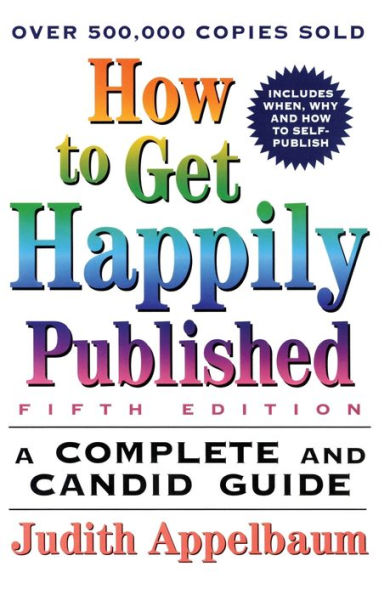Read an Excerpt
InitiationTo begin with, an announcement for professional writers, would-be writers and people who have important things to say from time to time and want to say them in print: It is largely within your power to determine whether your work will get published and whether the public will buy it once it's released.
That having been said, two questions naturally arise: Why do so many people fail to get their articles, stories, poems and books into print? And why do so many people who succeed in getting articles, stories, poems and books into print then find that their work never attracts a sizable audience?
The answer is surprisingly simple. Failures abound because hardly anybody treats getting published as if it were a rational, manageable activity--like practicing law or laying bricks--in which knowledge coupled with skill and application can lead to success. Instead, almost everybody approaches the phases of the publishing process, which have to do with finding (or, in some cases, becoming) a publisher and then attracting an audience, by trusting exclusively to luck, to merit, to formulas or to somebody else.
Such behavior is thoroughly counterproductive, but it's entirely understandable at the same time, and on several grounds.
In the first place, just like everybody else, people who write are reluctant to risk ridicule by asking questions. Seeking information is an intimidating task. Since knowledge is power, as we've all been raised to believe, ignorance must be impotence, and it's shameful, therefore, to admit it when there's something we don't know.
And in the second place, we tend to proceed on the assumption thatmastery of any field is the exclusive province of specialists and experts. The lay public, so the theory goes, can't expect to understand how to fix a leaky pipe, let alone how to get a manuscript from writer to reader, so people who aren't prevented from inquiring by the fear of looking silly are hindered by the fear that the information they'll receive will be unintelligible anyway But even those who are brave and energetic enough to go in search of knowledge about getting published have not, in many cases, found the effort worthwhile.
What all authors really need is an experienced editor who has the time and the inclination to sit down with them and show them how the industry actually works. What writers have, however, is an oppressively large canon of works on selling to established publishing houses (which usually tell only parts of the truth and may not tell the truth at all), a growing body of guides to self-publishing (some of which make pie-in-the-sky promises) and a few books about publishing in general (which tend to explain the way the business works without focusing on the flesh-and-blood men and women who run it and who inevitably alter the rules to fit personal and practical demands).
This book is a substitute for the friendly, experienced editor. It offers a full and frank description of the contemporary publishing picture--complete with fallible human beings in the foreground and annotated guides to hundreds of helpful resources at the back. Anyone who reads it intelligently should come away with a good idea of the way the publishing process normally works, valuable information on the ingenious tactics writers have devised to make it work best for them, and easy access to additional information about the full range of publishing options, which together give you everything you'll need to create effective publishing strategies for particular projects.
Decades of personal experience in editing books, magazines, newspapers and newsletters have gone into the advice you'll find here about getting through the publishing labyrinth. And so have myriad experiences other publishing professionals shared, all of which help explain each phase, introduce the people in charge, define the unfamiliar terms, set forth the basic unwritten rules that govern progress and tell you how to discover more about whichever aspects of getting published interest you.
But at every step the main focus of attention will be on what you want, what you need, what you'll have to contend with to get it, how wide your options are, and how you can reach your goals most expeditiously.
This book, in other words, is designed to facilitate writing careers and writing projects, and its overriding purpose is to help you improve your improvisational skills so that you'll be able to switch gears when you need to, no matter what the rulebook experts say. The idea is that once you understand why your novel got just half a page in the catalog (for example), you'll take steps to improve its image. Similarly, once you see how queries work in context, you'll choose to use them for books as well as articles, and once you've gained the confidence toobey other people's dictates only when they fit your situation, you'll refuse to rely on a manuscript speaking for itself and craft strong covering letters, making sure that the one for the editor at New Woman is quite different in tone--and maybe even in content--from the one you're sending New Age.
New Woman may return your material, of course, and so may New Age Journal and Random House and Moyer Bell, but please don't let yourself be discouraged if getting what you want involves a few false starts. To keep your spirits up on darker days, you may find it useful to dwell on four important facts:
•Publishers need you at least as much as you need them. Despite widespread suspicions of conspiracy, there's little truth in the theory that an elite circle of editors and writers concentrated in Manhattan and doing business on the cocktail-party circuit reserves every printed page for itself.
How to Get Happily Published. Copyright © by Judith Appelbaum. Reprinted by permission of HarperCollins Publishers, Inc. All rights reserved. Available now wherever books are sold.



